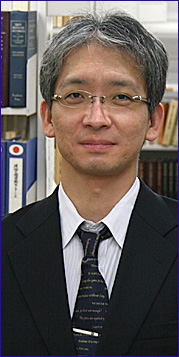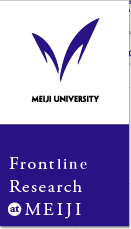

What is the Medical Law ?
The Medical Law is a new field of learning that considers legal issues related to medicine, which started widely in the 1970s. There is no specific law that calls itself “the Medical Law” in Japan, and there also are no settled doctrine on either system of codes or methods for studying. It is therefore a young, budding field of study that is on the path to growth and development.Thus, when studying issues related to medicine from a legal perspective, we are compelled to base our approach on the existing theory of study of law. When it comes to the study of the medical law, we need to handle a wide range of diverse laws, even if the subject is restricted to the study of law. For example, concerning the qualifications, services and other issues of healthcare professionals, we must not only have knowledge of various specialized administrative laws and regulations, such as Medical Practitioners Act and Public Health Nurses, Midwives and Nurses LAW, etc.; they must, as the premise for these, have basic knowledge of administrative laws in general. Medical accidents, which are making headline news today, face sanctions under Civil or Criminal Law as so-called malpractice suits. We must therefore not only have a basic knowledge of civil and criminal laws, but also Code of Civil Procedure, Code of Criminal Procedures, and so on.
Today’s medicine has the power to intervene in the origins as well as the end points of human life. Medicine is thus gradually transforming itself into an entity like an omnipotent god. As a result, even our definitions of life and death, as well as of human life, have been put to the test, and it is by no means clear that they can be maintained in their existing forms. For example, issues related to the inception of life may include prenatal diagnosis, artificial insemination, and surrogate mother; those related to the terminal period include brain death; refusal of treatment because of beliefs, philosophies or religions; death with dignity; and euthanasia. These issues and problems can no longer be solved using legal frameworks. A study of these questions demands a knowledge not only of bioethics but also of the science of religion, cultural anthropology, the history of science, sociology, etc. Furthermore, problems related to gene therapy, genomic analysis, and regenerative medicine, which are medical technologies that have come into the spotlight since the start of the 21st century, will be drawn into the debate on the public health of society as a whole through each individual’s views on health. They will share borders with a range of public policies (especially social policies, health policies, social security and social welfare), interact with each other, and eventually become closely interrelated.
On the other hand, it is clear that, in all these cases, it will be necessary to delve deeper into the problems, based on the viewpoint of medicine and medical treatments themselves. This is why it will also be necessary to have a close understanding of medicine and medical treatments.
Indeed there are no clearly established methods for studying in the Medical Law. But two approaches would be absolutely necessary: an approach specific to the science of law; and an approach that delves into problems from the angle of medicine and medical treatments themselves. Then, to fill the gap that is bound to exist between medicine and law, we will need other disciplines, such as bioethics, political science, economics, sociology, history, and social welfare. This makes the Medical Law a truly interdisciplinary field of learning.
The need for a comprehensive and specialized resource center
We would treat of an extremely interdisciplinary field such as the medical law, we are faced with the problem of dealing with a mass of documents and materials that are extremely diverse in content. Let’s take books, which used to be the major form of research document, as an example. It is easy to imagine that even for a one subject, books covering an extremely large number of fields and volume will be necessary. (For example, you can try actually to search for books related to organ transplants in ways that cross disciplinary borders.) These days, information necessary for research is not restricted to paper. Not only audio and visual records but also a wide range of information on the Internet will increasingly be sources of information. (It has become a common practice to release government-related information on the Internet, such as the proceedings of Ministry of Health, Labour and Welfare committees.) And thus, the question of “How much information, which is endlessly created and floats on a daily basis in different forms, can be grasped and collected?” is an extremely important theme when considering contemporary methods for studying. The field of learning known as the Medical Law is directly confronted this very theme on a daily basis.Libraries that have thus far focused on gathering and sorting out paper media, especially books and journals, as well as museums that have mainly worked to collect, store and survey works of art and historical relics, are unable to address this theme very successfully because of the nature of their system. The reality, therefore, is that they are unable to present answers that can fully satisfy their users.
A comprehensive and specialized resource center for medicine, law and ethics
Meiji University is in the process of carrying out a project to establish a comprehensive and specialized resource center for medicine, law and ethics (provisional title: abbreviated to ELM). ELM aims to comprehensively collect a variety of archives (e.g., books, journals, official documents and materials, audiovisual records, and a variety of digital data on the Internet, etc.) relating to medical laws and bioethics, and to broadly and adequately offer these intellectual resources to users, making them the starting point for academic progress relating to medical laws and bioethics. However, the significance of ELM is not limited to its presence as a research information base for medical laws and bioethics. It is a touchstone for considering research methods in general in the context of interdisciplinary learning; it is also a test for considering how to build a new research information base that is not bound by conventional notions about what form libraries, archives, and museums, etc., should take.Completing this project and making it meaningful will definitely entail considerable difficulties, and is likely to take a considerable amount of time. As things stand now, it appears that completing the project will take about ten years. However, operations are slated to begin within five years.
“The stars are far away; the fog never dissipates. However, the road has been paved.”
Profile
Associate Professor Tomoyo Konishi, School of Law, specializing in the Medical LawBorn in Kyoto Prefecture in 1970. Graduated from the Department of Law, Faculty of Law, Kokugakuin University, and completed his master’s course in civil law at Meiji University Graduate School of Law. Quit his doctoral course in civil law at Meiji University Graduate School of Law. After serving as a part-time lecturer at the Tokyo Medical University School of Nursing, adjunct instructor at the Faculty of Medicine, University of Yamanashi, adjunct instructor at the Faculty of Law, Kokugakuin University, and assistant professor of law at the Graduate School of Humanities and Social Sciences, University of Tsukuba, he assumed his current post at Meiji University in April 2010. He is a member of the Tsukuba University Hospital’s Clinical Research Ethical Review Board, a member of the Medical Ethics Committee, and a member of the Conflict of Interest Committee.









